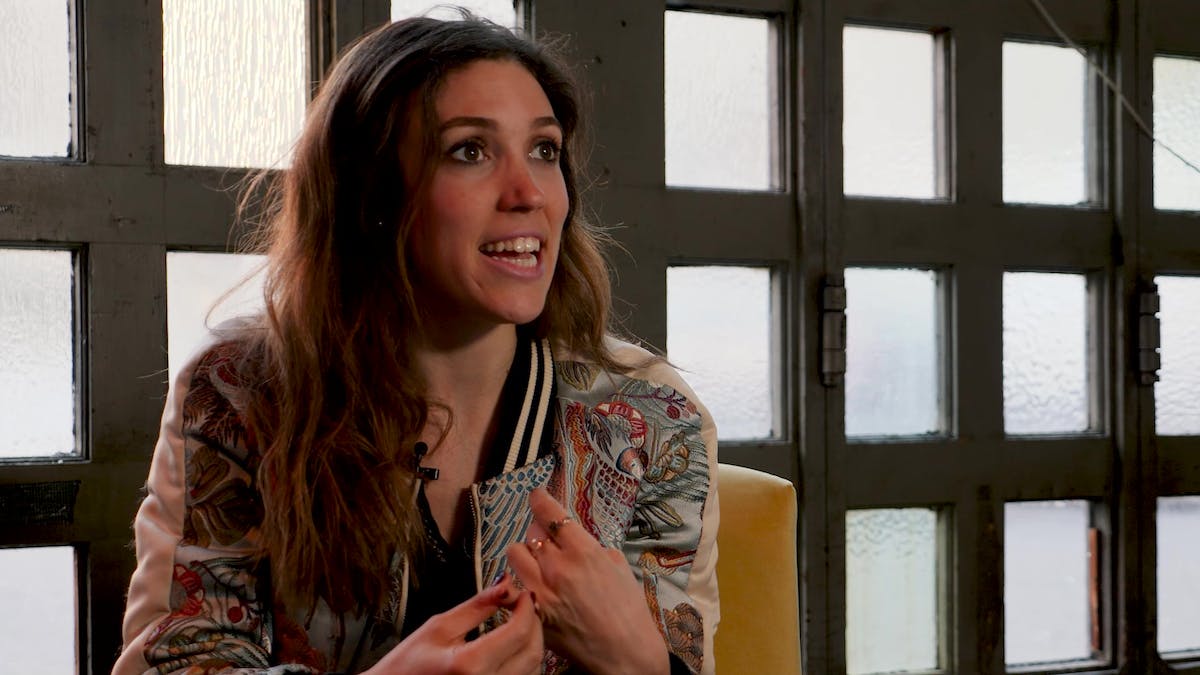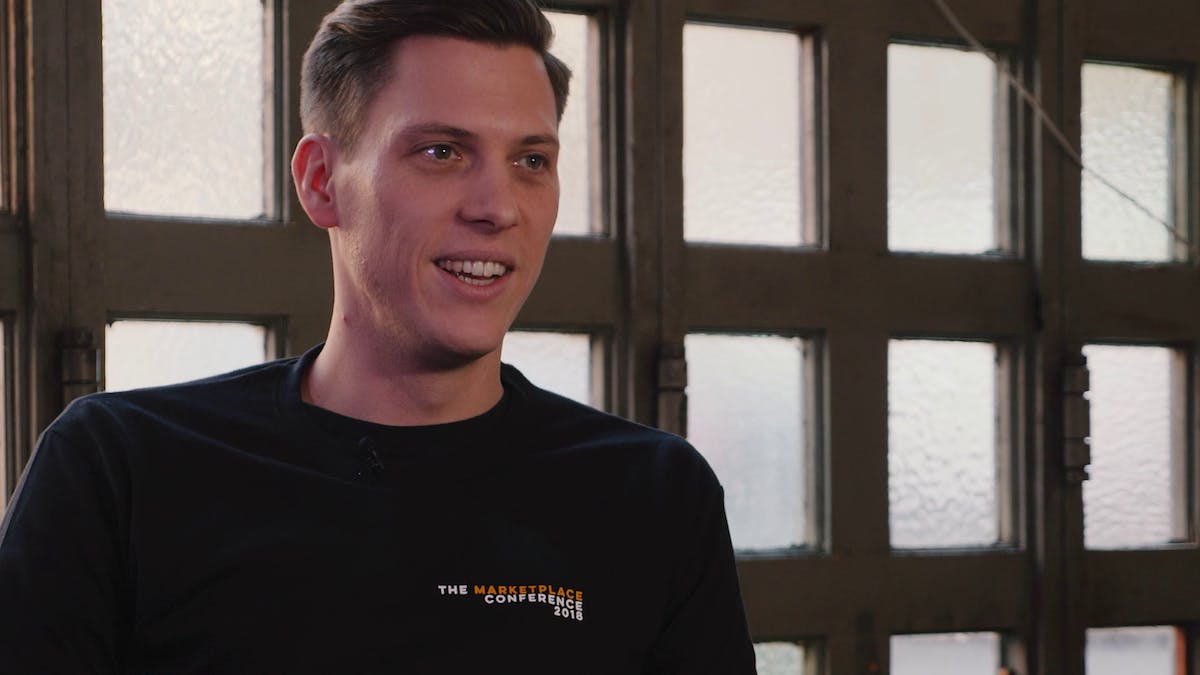Investor Carmen Alfonso Rico on what makes a marketplace defensible
Carmen Alfonso Rico’s strategies for building a marketplace that is defensible against competitors.
Published on
Last updated on

Welcome to episode 3 of The Backstage. In this video interview series, we bring you backstage chats with leading marketplace experts.
Carmen Alfonso Rico, Investor at Samaipata, looks for defensible, scalable marketplace businesses that have data-driven founders. In this episode of The Backstage, she explains all about Samaipata’s investment thesis and the factors that catch her attention in marketplaces.
Carmen Alfonso Rico leads Samaipata’s UK office. Samaipata is a thematic fund investing in marketplaces and digital brands because, ultimately, they invest in defensibility.
According to Samaipata’s investment thesis, defensibility is the main driver of long-term value in a business. Rico evaluates a marketplace’s defensibility mainly by looking at three characteristics: network effects, the power of the brand, and switching costs. In the interview, she explains how Samaipata analyzes these factors when making investment decisions.
In addition to defensibility, Rico talks about scalability, retention and engagement, and the importance of tracking the right marketplace metrics and making data-driven decisions based on them.
Pressed for time? Here are our two main takeaways.
- Think about defensibility in terms of both sides on your marketplace, supply and demand. Defensible marketplaces benefit from powerful network effects and create an emotional connection with their customers.
- Don’t neglect your supply: without supply, you don’t have a service or product. And if your supply is only defensible because your platform pays the most, eventually a better-funded competitor will steal away your supply.
More of a reader? You can read a full transcript of our interview with Carmen Alfonso Rico below. The transcript is lightly edited for an enjoyable reading experience.
My name is Carmen. I am an investor at Samaipata. I lead the UK office.
Samaipata is a pre-seed – seed-stage VC fund, investing only in marketplaces and digital brands.
We're thematic by business model, and we only invest in marketplaces and digital brands.
If you think about it, there are two reasons. One is that we need to build expertise if we want to add value. But ultimately, as an investment thesis, it's because we invest in defensibility. We believe that defensibility is the main driver of long-term value.
Now, in marketplaces, defensibility can be made up of mainly three modes, how we look at it.
One is network effects. And there are very different ways to classify a network effect. But basically, the very basic idea is that when a new user joins, the value that the service or product that the company is providing to the new and existing users increases. And that's absolutely the key driver of defensibility for us. You could even say that we actually invest in network effects, not even marketplaces only.
Another way to assess defensibility is to look at the power of the brand. We really believe that that emotional connection that you establish with your customer is a barrier of entry. It's a very strong barrier of entry. You need to create that community, that sense of belonging, to be defensible against competitors.
And third, last but not least, is switching cost. So, because the more you've used our platform our product, the more personalized it is, the better is the UX. It's just, you, kind of, create barriers for your people to leave.
On defensibility, it's very important to understand that we look at it from the demand and the supply side, not just the demand. You need to build a defensible supply, especially if you are a service marketplace, right? Because without that supply, you cannot provide an experience.
Now, we don't like models where your supply is only defensible based on cash, like it happens, for example, in Uber. Because if you have a better-funded competitor, they will steal away your supply. With no supply, no experience, and if you want to compete and get the supply, the issue you're going to have is your unit economics might stop working. So you need to build a defensible supply. It's absolutely key.
The second factor that we look at on top of defensibility would be scalability. And again, that comes back to demand and supply as well.
So, scalability takes different answers. But first of all, is your total addressable market on the demand side big enough, and is there enough depth of supply? Can you build a business big enough with the supply that you're going to need? And how are you going to acquire that demand and that supply? There, we look at the typical unit economics.
And then third, what are the processes, like onboarding? Can you really create a scalable onboarding process that keeps the quality of the supply? So I think scalability is key and another concern.
And third—and we're very, very focused on this as investors—is retention and engagement. I always say, "If they will ask me for one single metric that I look at, it's the cohorts." We look at cohorts both on retention and engagement. So we look at both the Q, the quantity, and the R, the repetition. And it's absolutely fundamental on the supply and on the demand side again.
Also, a problem that especially on-demand and service marketplaces have is leakage. Because as soon as the interaction is human, there's this temptation from the supply and the demand to take the transaction off the platform.
So, we look at cohorts to understand how that's doing. But then we also try to figure out ways—and many of them are very sector-specific—that you can add value to the supply and the demand to decentivize that leakage.
It might be, for example, in the case of Airbnb, insurance. That is a great one, but that doesn't work for everyone. Others create SaaS tools to remove the admin trouble. So, how do you make sure that the transaction happens on the platform is absolutely key as well.
So I think that that would be the key three: defensibility, scalability, and retention and engagement.
It's a very good question and I'm happy you asked because I actually wrote a post about this topic. I developed a customer love framework, so to say.
Some people think the brand is something intangible. And it is intangible but it's customer behavior, and ultimately you can measure it. There are a lot of metrics that you can look at.
Cohorts is an amazing indication. If your customers want your product, they're coming back and they're buying more and more, there's clearly a brand going on.
Another one is obviously if your organic acquisition goes up, there's word of mouth, there's virality, people are telling their friends, that also shows the power of the brand. And then what that translates into is that your blended customer acquisition cost goes down, right?
So, you have the acquisition side and then you have the retention side.
There are many other softer ways to look at it. I personally check Instagram. I check Instagram engagement because the followers is a vanity metric. You need to check the comments to get a feel of, how engaged is that community, right? Is there really that sense of belonging?
There are great examples of powerful brands. You have Glossier in the U.S. who, through content, created a trusted community around them, and then you can sell them anything, kind of.
The idea of creating a brand is very important. Think about how we order food. We order from restaurants but it's Deliveroo, in our case, or Uber Eats that we are actually ordering from, right? So they're providing a branded experience that they don't always control, which is another challenge. You need to make sure that the experience is perfectly on brand.
Well, there are many that are related to startups in general. But if I had to think about two from marketplaces, it's, first of all, not to think about your supply hard enough, to just be very focused on the demand side.
And then the second and most common is the lack of liquidity. And this is also about how you approach the launch, right? In our thesis, we like founders that have a very clear differentiation between their go-to-market and their vision. And the vision can be to own Europe, I don't mind. But your go-to-market should be saturate nodes. You need to saturate nodes and then create liquidity there, and then, kind of, replicate that playbook.
I think Deliveroo is a great example. They launched in Chelsea, which is a tiny neighborhood in London, and proved there. Because when you need liquidity—especially in those marketplaces that need liquidity—if you try and aim at launching, even if it's just London overall, and I go into a beauty app, for example, and want to book nails, and I get into the app and there's no liquidity, you've lost me. But you've paid for me! So the risk is very high.
So my advice would always be: focus, saturate nodes, and then expand. It's tempting to go very big from the beginning.
And the third thing that's also not said enough—and it's not necessarily only in marketplaces but it's very important for founders—is be data-driven from minute one.
I always ask every founder I meet and am going to do analysis on to provide me with a KPI dashboard that they use to look at the business. And I don't need to be linked to the software, and I don't even need it to be super updated at that time. I just need to understand how they're looking at the business.
Because data-driven decisions are better decisions. And if you don't do it from the beginning, if you don't build a very data-driven business, it's very tough down the road. And you need to be able to understand where you're putting the money, the impact that that's having, and iterate accordingly.
This is the third episode in The Backstage interview series. The series has 13 episodes featuring marketplace industry heavyweights like Axel Bard Bringéus, Josh Breinlinger, and Ben Narasin. You can subscribe to the series by signing up for the Marketplace Academy newsletter.
You might also like...

What do investors look for in marketplaces?
Mathias Ockenfels shares his love of network effects – and how he spots them early on.

How to grow your marketplace on a budget
The road to 1,000 customers starts with 10 happy ones (that you didn’t have to pay for).

Brian Rothenberg at the Marketplace Conference: Driving growth via buyer/seller overlap
Trust Eventbrite’s VP of Growth: if customers are turning to providers on your marketplace, you’re on to something magical.
Start your 14-day free trial
Create a marketplace today!
- Launch quickly, without coding
- Extend infinitely
- Scale to any size
No credit card required
